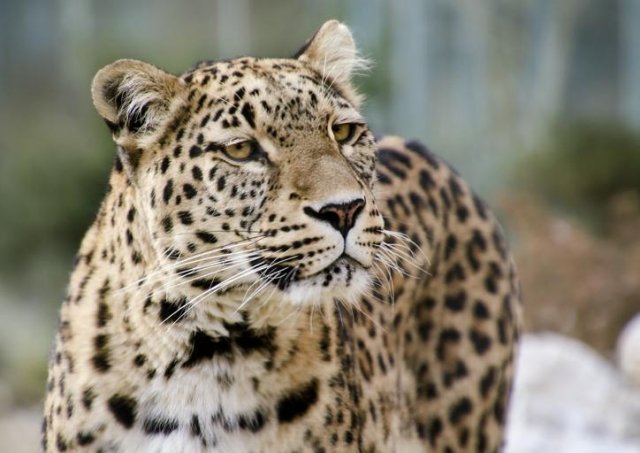5 Threats Facing the Survival of the Persian Leopard
The Persian Leopard
The Persian leopard, also known as the Caucasian leopard, is a majestic big cat that once roamed across a vast range from the Caucasus Mountains to Iran and Central Asia. However, this beautiful species is now facing numerous threats that are pushing it towards the brink of extinction. In this article, we will explore five major threats that are endangering there survival
Habitat Loss and Fragmentation
One of the primary threats to the Persian leopard is habitat loss and fragmentation. As human populations expand and encroach upon natural habitats, the leopard’s territory is shrinking rapidly. Deforestation, urbanization, and agricultural expansion are destroying the leopard’s natural habitat, leaving them with limited space to roam and find prey.
For example, in Iran, where a significant population of Persian leopards resides, the conversion of forests into agricultural land has resulted in a loss of suitable habitat. According to a study published in the journal Biological Conservation, the Persian leopard’s habitat in Iran has decreased by 82% over the past century.
Key statistics:
- 82% decrease in Persian leopard habitat in Iran over the past century
Poaching and Illegal Wildlife Trade
Poaching and the illegal wildlife trade pose a significant threat to the survival of the Persian leopard. The leopard’s beautiful fur and body parts are highly sought after in the black market, driven by demand for traditional medicine, fashion, and trophies.
Despite being protected by national and international laws, the Persian leopard continues to be targeted by poachers. In some regions, leopards are killed for their fur, while in others, they are trapped and sold as exotic pets. The illegal wildlife trade not only decimates leopard populations but also disrupts the delicate balance of ecosystems.
Case study:
In 2018, Iranian authorities seized a shipment of 12 Persian leopard skins destined for the illegal wildlife trade. This incident highlights the ongoing threat of poaching and the need for stricter enforcement of wildlife protection laws.
Human-Wildlife Conflict
As human populations expand and encroach upon leopard habitats, conflicts between humans and leopards become more frequent. Leopards may prey on livestock, leading to retaliatory killings by farmers. In some cases, leopards may also attack humans, further exacerbating the conflict.
Human-wildlife conflict not only results in the loss of leopard lives but also creates negative perceptions towards the species. This can hinder conservation efforts and make it more challenging to implement effective measures to protect the Persian leopard.
Key statistics:
- Retaliatory killings by farmers are a significant cause of leopard mortality in some regions
Climate Change
Climate change is another threat facing the survival of the Persian leopard. Rising temperatures, changing precipitation patterns, and habitat degradation due to climate-related factors can disrupt the leopard’s natural habitat and prey availability.
For instance, a study published in the journal Global Change Biology found that climate change could lead to a significant reduction in suitable leopard habitat in the Caucasus Mountains. The study projected a potential loss of up to 67% of the leopard’s current range by the year 2070.
Key statistics:
- Potential loss of up to 67% of the Persian leopard’s current range by 2070 due to climate change
Lack of Conservation Efforts
Despite the critical status of the Persian leopard, conservation efforts have been inadequate in many regions. Limited funding, lack of political will, and insufficient awareness about the leopard’s plight have hindered effective conservation measures.
However, there are some success stories that demonstrate the positive impact of conservation efforts. For example, in Armenia, the Foundation for the Preservation of Wildlife and Cultural Assets has been working tirelessly to protect the Persian leopard. Through their efforts, the leopard population in Armenia has shown signs of recovery.
Case study:
In 2019, camera traps captured footage of a Persian leopard and her cubs in the Caucasus Wildlife Refuge in Armenia. This sighting is a testament to the success of conservation efforts in the region.
Summary
The Persian leopard is facing numerous threats that are pushing it towards extinction. Habitat loss and fragmentation, poaching and illegal wildlife trade, human-wildlife conflict, climate change, and the lack of conservation efforts are all contributing to the decline of this magnificent species.
To ensure the survival of the Persian leopard, it is crucial to address these threats through a combination of habitat protection, stricter enforcement of wildlife protection laws, community engagement, and climate change mitigation measures. Only through concerted efforts can we secure a future and preserve the biodiversity of our planet.
Read More About Snow Leopards From Wikipedia




